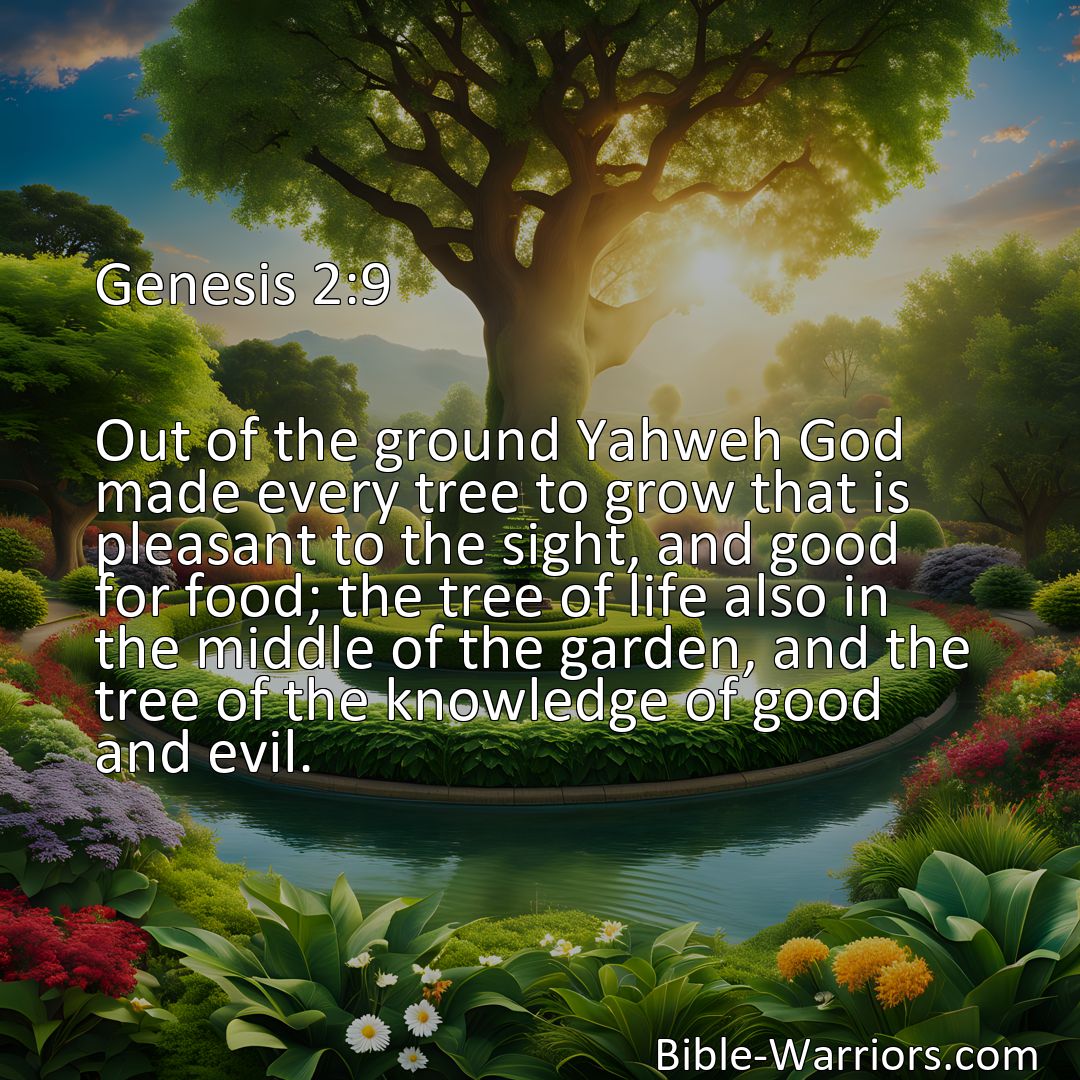Genesis 2:9 – Out of the ground Yahweh God made every tree to grow that is pleasant to the sight, and good for food; the tree of life also in the middle of the garden, and the tree of the knowledge of good and evil.
In the Garden of Eden, Yahweh God created two significant trees – the Tree of Life and the Tree of Knowledge of Good and Evil. The Tree of Life represented eternal existence and a connection with the divine, while the Tree of Knowledge granted understanding of good and evil. Through Adam and Eve’s disobedience, they lost access to both trees, teaching us the importance of making wise choices and obeying Yahweh God’s commands. This story serves as a reminder to trust and follow divine guidance in our own lives.
Table of Contents
In the book of Genesis, we learn about the magnificent creation of the Garden of Eden by Yahweh God. This beautiful paradise was filled with breathtaking sights and an abundance of delicious fruits. One of the most notable aspects of this garden were two specific trees – the Tree of Life and the Tree of Knowledge of Good and Evil.
According to the verse, Yahweh God made every tree grow out of the ground in the garden. These trees were not only a source of sustenance but also a delight to the eyes. Picture yourself walking through this garden, surrounded by a variety of lush trees and vibrant colors. It would have been truly awe-inspiring!
However, among all the trees, two held particular significance. First, there was the Tree of Life, situated right in the middle of the garden. This tree symbolized eternal life and immortality. Its fruits were said to possess special properties that granted those who consumed them with everlasting existence. It represented the ultimate connection with the divine and the promise of a life that never ended.
On the other hand, there was the Tree of Knowledge of Good and Evil. This tree, too, resided in the midst of the garden. Unlike the Tree of Life, this tree was not meant to grant immortality. Instead, it held knowledge that would allow humanity to understand the concepts of good and evil. Through its fruits, one would gain the ability to distinguish between right and wrong, to comprehend moral choices, and to exercise free will.
Yahweh God’s decision to place these two significant trees in the garden posed both a temptation and a test for the first human beings, Adam and Eve. They were given the freedom to eat from any tree in the garden, including the Tree of Life. However, they were strictly forbidden from consuming the fruit of the Tree of Knowledge of Good and Evil.
This prohibition was not intended to withhold wisdom or limit their growth. Instead, it represented Yahweh God’s desire to preserve their innocence and protect them from the consequences of evil. It was a loving act of guidance and provided an opportunity for Adam and Eve to demonstrate their trust and obedience to their Creator.
Sadly, the lure of the forbidden fruit proved to be too strong for Adam and Eve. Despite their knowledge of Yahweh God’s command, they were enticed by a serpent to eat from the Tree of Knowledge of Good and Evil. In doing so, they gained the knowledge they sought, but it came at a great cost.
The repercussions of their disobedience were severe. First and foremost, they were banished from the Garden of Eden, losing access to the Tree of Life and, consequently, eternal life. Their connection with the divine was marred, and they were forced to face the harsh realities of mortality and suffering.
This story serves as a cautionary tale, teaching us about the consequences of succumbing to temptation and disobeying Yahweh God’s commands. It reminds us that knowledge, while valuable, can also be used improperly. In seeking knowledge, we must always consider the moral implications and exercise discernment.
At the same time, this story reinforces the importance of trust and obedience in our relationship with Yahweh God. It encourages us to seek divine guidance and follow the path set before us, even when faced with enticing alternatives. By doing so, we can fulfill our purpose and live in harmony with our Creator.
In conclusion, the Tree of Life and the Tree of Knowledge of Good and Evil exemplify the depth and complexity of Yahweh God’s creation in the Garden of Eden. These two trees symbolize the eternal and the temporal, the divine and the human, and the choices we make that shape our lives. They serve as reminders to exercise wisdom, discernment, and obedience in our own journeys of faith. By understanding the lessons embedded within this biblical account, we can strive to cultivate a deeper connection with Yahweh God and live a life that reflects His divine will.
Freely Shareable Bible Verse Image Genesis 2:9
I hope this Bible verse image brings you hope and peace. Share it with someone who needs it today!



